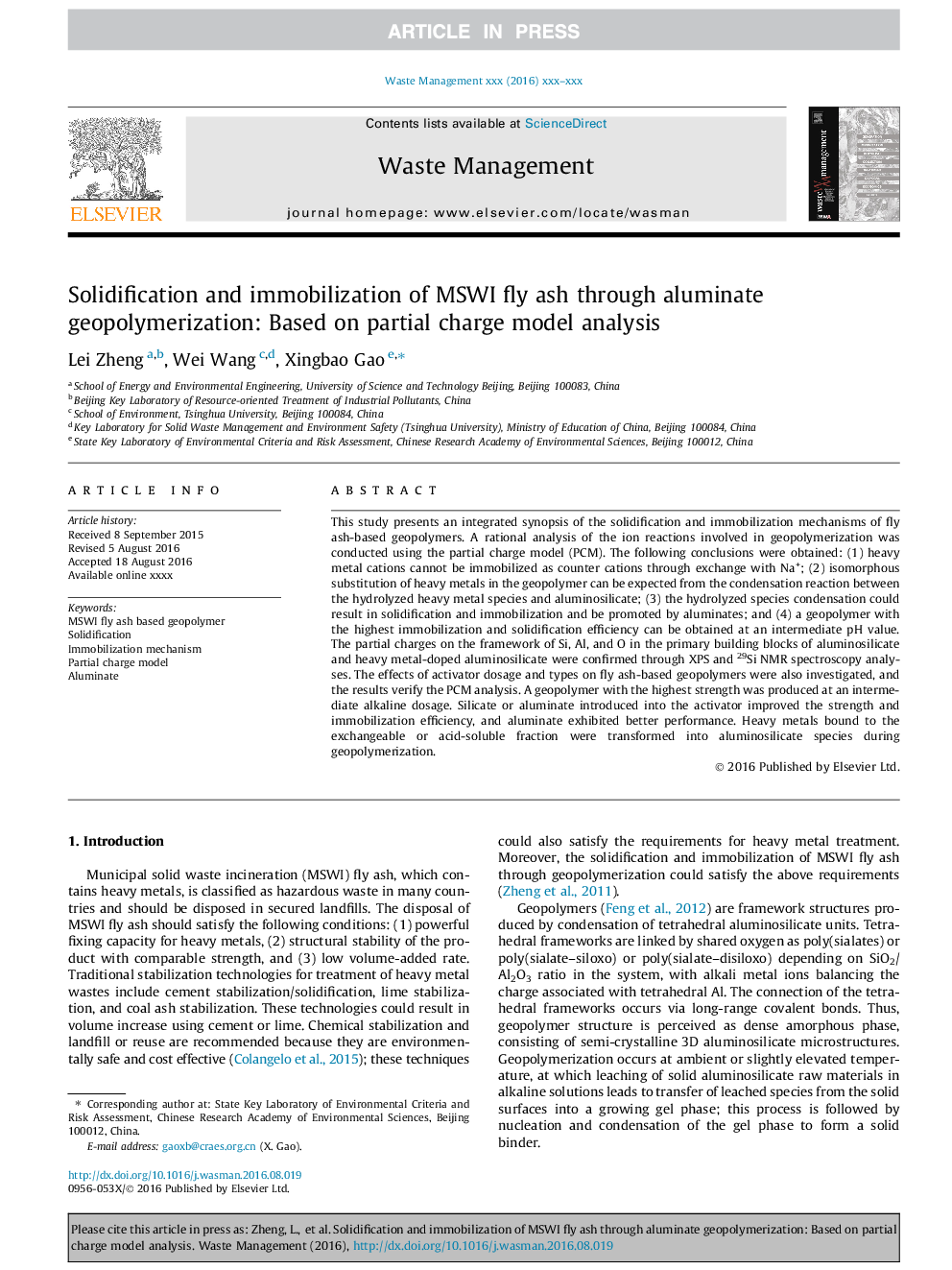| Article ID | Journal | Published Year | Pages | File Type |
|---|---|---|---|---|
| 5757097 | Waste Management | 2016 | 10 Pages |
Abstract
This study presents an integrated synopsis of the solidification and immobilization mechanisms of fly ash-based geopolymers. A rational analysis of the ion reactions involved in geopolymerization was conducted using the partial charge model (PCM). The following conclusions were obtained: (1) heavy metal cations cannot be immobilized as counter cations through exchange with Na+; (2) isomorphous substitution of heavy metals in the geopolymer can be expected from the condensation reaction between the hydrolyzed heavy metal species and aluminosilicate; (3) the hydrolyzed species condensation could result in solidification and immobilization and be promoted by aluminates; and (4) a geopolymer with the highest immobilization and solidification efficiency can be obtained at an intermediate pH value. The partial charges on the framework of Si, Al, and O in the primary building blocks of aluminosilicate and heavy metal-doped aluminosilicate were confirmed through XPS and 29Si NMR spectroscopy analyses. The effects of activator dosage and types on fly ash-based geopolymers were also investigated, and the results verify the PCM analysis. A geopolymer with the highest strength was produced at an intermediate alkaline dosage. Silicate or aluminate introduced into the activator improved the strength and immobilization efficiency, and aluminate exhibited better performance. Heavy metals bound to the exchangeable or acid-soluble fraction were transformed into aluminosilicate species during geopolymerization.
Related Topics
Physical Sciences and Engineering
Earth and Planetary Sciences
Geotechnical Engineering and Engineering Geology
Authors
Lei Zheng, Wei Wang, Xingbao Gao,
